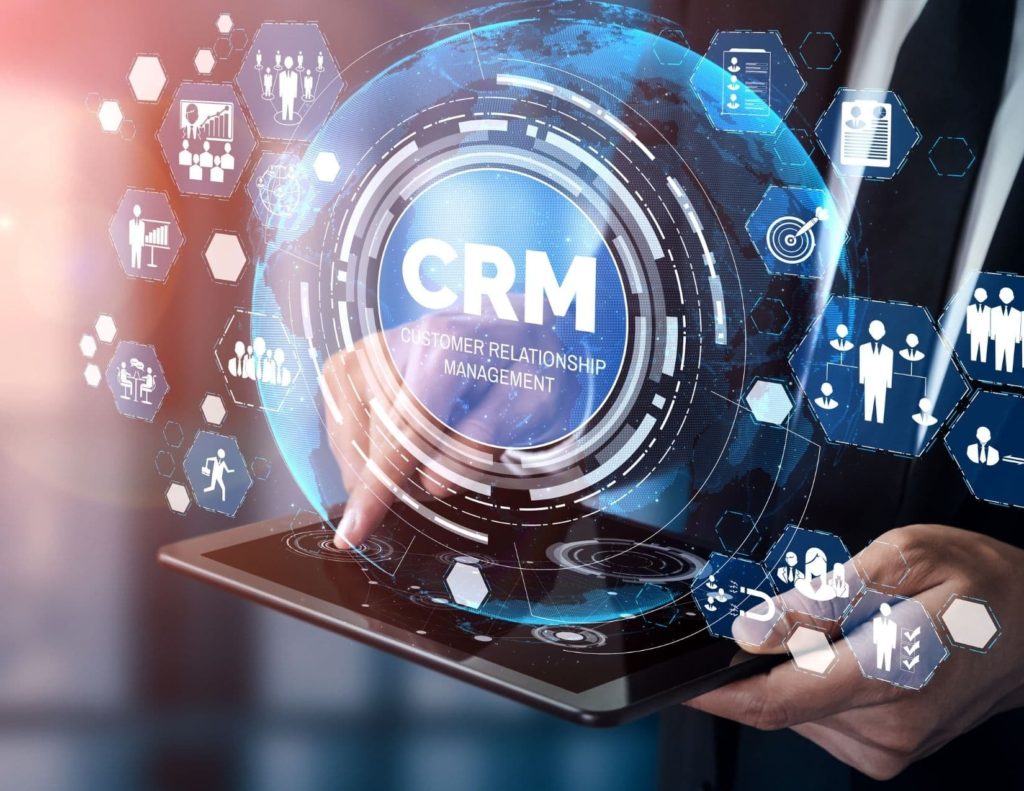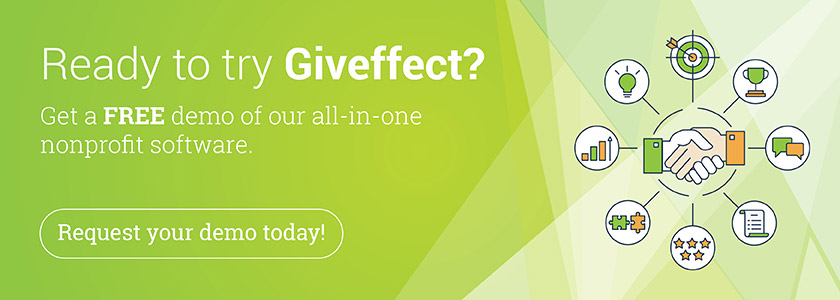Are you using a CRM for your nonprofit? If not, or if you aren’t using the right CRM, you may be missing one of the most helpful tools in the nonprofit arsenal.
As a nonprofit leader, your most valuable asset is time. Your time, your staff’s time, and the time of your volunteers are worth their weight in gold. CRM software can help you to maximize that time by allowing managing a number of tasks that eat away at each workday.
In the event that you are new to CRM software for nonprofits or that you inherited a system from your predecessor and just haven’t taken the time (there it is again) to think through how or IF that system works, let’s take a few moments and dig into what a CRM is and what it can do for your organization.
What is a CRM?

Nonprofits love their acronyms, don’t they? What NPO ED hasn’t reported on their EOY ROI to their EC ahead of their 990?
CRM is an acronym that every ED should know, and CRM software is something that every 501(c)3 should use.
CRM stands for “constituent relationship management” (though you may also hear “customer relationship management”). A CRM is a tool that allows you to manage all available information related to donor relationships. A CRM can track:
- Who has donated in the past
- How much an individual or organization has donated
- When in the year they have given
- How to contact them
- Any restrictions on the gift
Working in combination with your accounting software, you can also track how a specific gift was spent, and whether reporting is needed.
A CRM should also allow nonprofits to track trends in giving. It looks at which campaigns attract which demographic of donors, allowing a savvy fundraiser to target specific donor groups. By tracking donor data, a CRM system can help an organization plan its fundraising efforts more strategically.
Some CRM solutions provide built-in tools for thank you letters, end-of-year reporting, tax letters, and other correspondence. Some even feature built-in workflow engines to make sure that the proper team member is assigned to a correspondence or tracking task. This allows your ED to respond to major donors, or your bookkeeper to know when payment processing is needed.
How to use CRM for nonprofits
The ways that your organization can use a CRM will vary depending on your own needs. From tracking donations to managing memberships, and from coordinating volunteers to processing payments, a CRM for nonprofits can be deployed for many different tasks.
Forum One points to three key things that a CRM can do for a nonprofit:
- Centralize information
- Segment contact types
- Know your audience
Let’s zoom in on each of these.
Keep information in one place
Every nonprofit organization has a wide array of information that it collects and gathers. This includes tracking donations, but it also includes documentation of the ways that a donor or grantor came to know your operation.
While it is possible to gather this info in a spreadsheet, or even an old-fashioned handwritten ledger, a CRM allows you to keep everything in one place. As Forum One puts it, “The challenge is that storing data in different spreadsheets, managed by different people, can result in incomplete or outdated data, and makes tracking historical data nearly impossible — not to mention require a great deal of time and resources to manage.”

The best CRM for nonprofits are cloud-based, allowing you and our team to access the management system from any computer, and often even from a mobile device. Consider how handy it might be to gather donor information at the door to your gala. No more collecting business cards, or hand-scribbled notes at member events, and no more reason to worry about having the information to follow up with a cash or in-kind donor.
And donor or volunteer information isn’t the only data you can compile in a CRM. If you have restricted grants, a CRM is a great place to notate those restrictions, and create a workflow for related reporting. Some CRMs offer tools for wealth screening, tracking matching gifts, and even accepting donations directly through the tool.
Categorize your contacts
Speaking of those contacts, a CRM will allow you to group your constituents together in a variety of ways at the touch of a button.
Looking to reach past donors who all live in one part of town? Maybe you want to nudge those who volunteered for your 5K last year to see if they will sign up again. Or maybe you want to hold an event for the dreaded “LYBUNT” (last year, but unfortunately not this year) donors to see if you can convince them to donate this year after all.
With other tracking tools, this type of segmentation can be challenging or even impossible. But a nonprofit CRM makes these reports easy and quick. You can sort your database by
- Location
- Interest area
- Past activity
- Constituent type (donor, volunteer, vendor, member, etc.)
And, if you have gathered detailed demographic information, you can often sort that way as well.
Understand your donors
Nonprofit CRMs allow you to really dig into the data in the system, and to put your analysis to good use. Forum One explains that “By analyzing your contacts’ actions, such as the events they’ve attended or the most recent volunteering campaign they signed up for, a CRM gives you a holistic view of your target audiences’ behaviors.”
On our blog, we discuss a few of the ways that you can analyze your CRM data in our management software. A few of the examples we list include:
- Donor Anniversaries
- Volunteer Anniversaries
- Birthdays
- Lost Touch
- Giving Gross Volume
- Giving First-Time Donors
- Giving Levels (w/chart)
- Giving Age & Gender
Unlike a spreadsheet, a CRM like Giveffect provides many ways to not just collect and organize your data, but to truly USE the data to help your nonprofit.
What to look for in a nonprofit CRM
There are a number of CRMs in the market, so it’s important to know what to look for.
CRM for nonprofits
First of all, choose a CRM for nonprofits. That may seem obvious, but it truly isn’t. The CRM as a concept was adopted by the nonprofit sector after it was a commonplace tool in the sales world.
If you recall, earlier we mentioned that a CRM is sometimes referred to as a “customer relationship manager”? That’s due to the for-profit origins. BizTech tells us “For businesses, CRM tools are often used to nurture sales leads, particularly in business-to-business settings, and they may contact those sales leads only once. Nonprofits, on the other hand, tend to contact the same people many times, mostly for fundraising.”
Instead of picking a CRM for business and then attempting to force it to do what you need, opt for a CRM software designed for nonprofits specifically. It should have most of the features you are looking for.
Features
It’s in those features where CRMs start to stand apart from one another. You will want to make sure that your CRM has all of the functionality you need at the moment. But you run a nonprofit–so you likely want to find a CRM that features management tools that you can use to build and grow.
In addition to donor management, some nonprofit CRMs offer tools like
- Email marketing integrations
- Event management and ticketing options
- Social media management systems
- Website and web hosting
- Volunteer management systems
- Membership management
- Built-in donation pages
- Workflow management
- Accounting software integrations
Some CRMs can help you to develop everything from online giving to full marketing strategies.
Data Security
A cloud-based tool demands strident security protocols. As you look for a CRM for your nonprofit, review theirs. Make sure that you can accept payments with a portal that is PCI compliant. Ensure that your data is encrypted and stored in secure data centers.
This information should be easy to find on a CRM’s website, but if it isn’t, make sure you ask some tough questions.
Training and support
When it comes to questions, you will want a CRM that is willing and able to handle them. It’s important to find a solution that wants to partner with you and help you to grow and succeed, and not just one that wants to sell you a product.
Make sure you select a CRM software that is transparent about their existing clients (wherever possible), and that can offer you case studies to make sure that their tools are a good fit for where you are headed. Find a partner that is always looking for ways to make their tool better, more user-friendly, and more intuitive.
Ask your possible CRM partner if you can get a free trial of their software so that you can be certain that it’s right for you.
Choose Giveffect
The best way to make sure that you have the best CRM for nonprofit organizations is to pick Giveffect. We’d love the opportunity to show you around and help you to see why we are the partner for you.
Try our all-in-one platform for growing and automating your nonprofit free for 14 days.
